Chinese pork and corn soup is a comforting dish on a cold day. It features tender pork ribs, and sweet corn on the cob and carrot in a gingery broth that’s full of umami. It makes a nutritious light meal by itself, is great for cooking ahead and serving later, and is wonderful for postpartum nourishment and recovery. {Gluten-Free Adaptable}
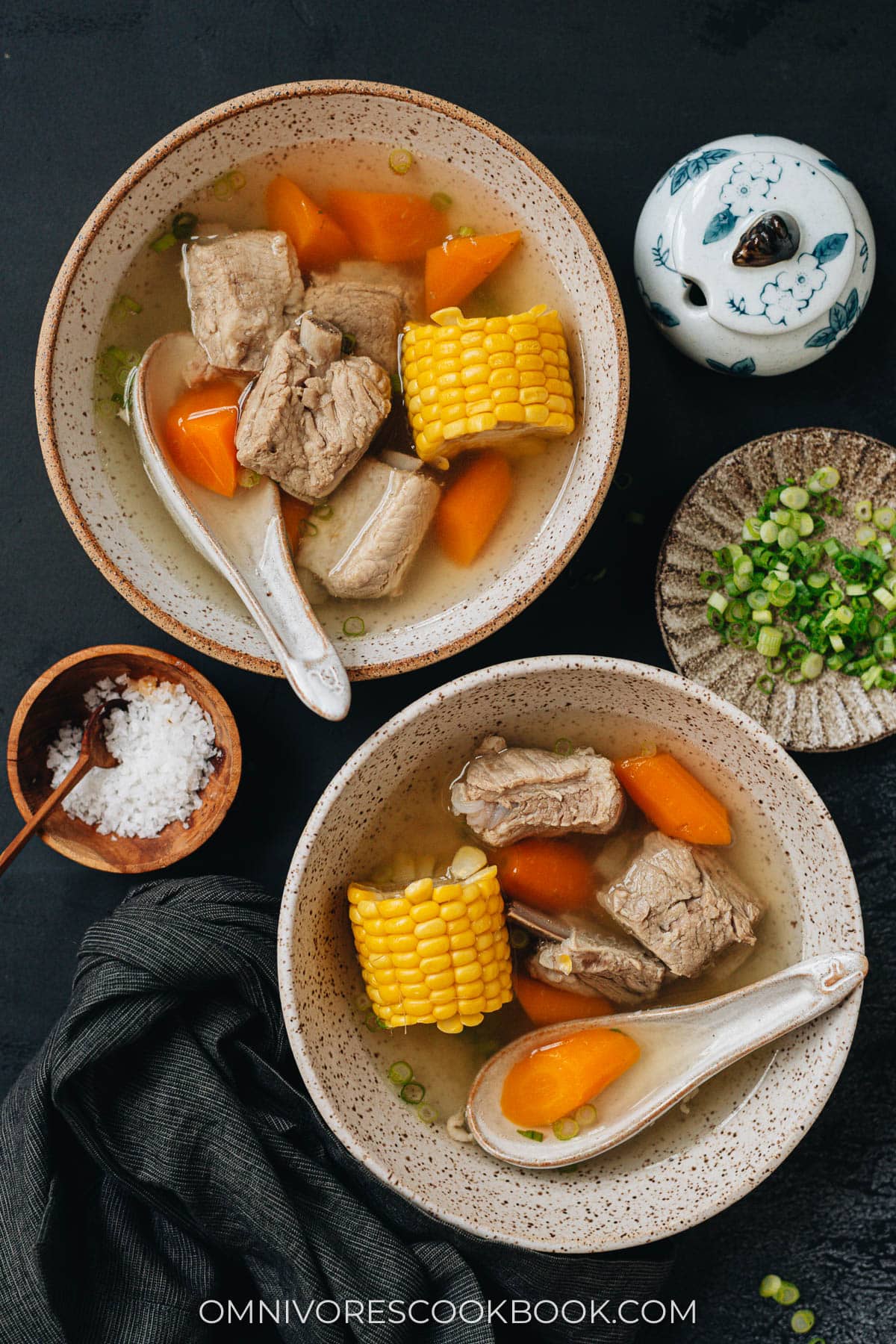
Pork and corn soup is a popular homestyle in China. Cut up pork ribs are simmered with ginger and green onion until fall-off-the-bone tender, then corn and carrot are added to impart a sweet taste to the soup. It is a dish that requires very little preparation and hands-on time. It’s often served as a starter or alongside other dishes. The soup is a light and nutritious meal that is consumed while recovering from illness. It’s also a postpartum soup that is enjoyed by moms after childbirth.
Pork and corn soup in postpartum recovery
In Chinese postpartum care, commonly referred to as “zuo yue zi” (坐月子) or 30-day confinement, there is a strong emphasis on nourishing the mother with specific foods that aid in recovery and replenishment after childbirth. Chinese pork and corn soup is one of the nourishing soups traditionally given to new mothers during this period.
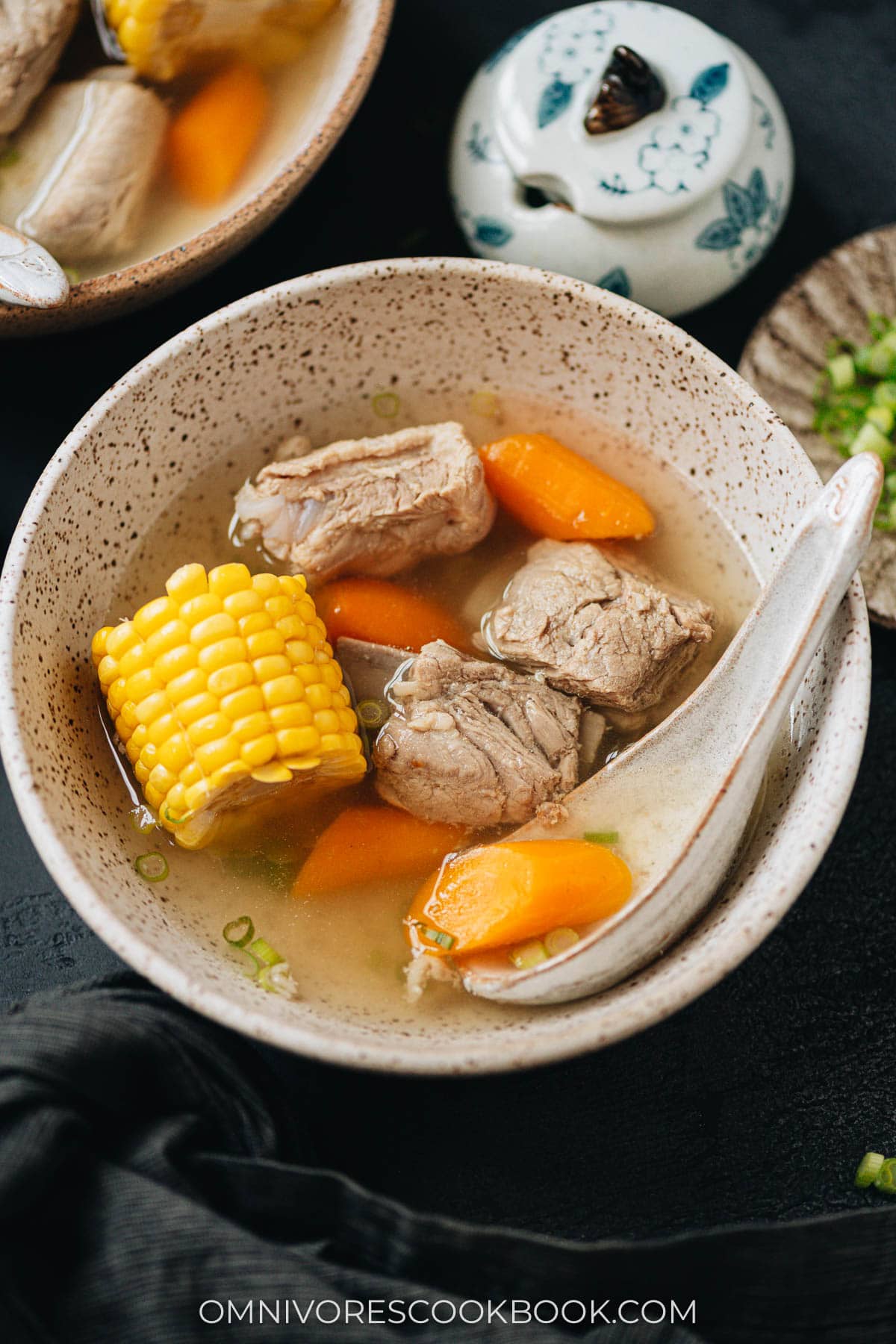
Nourishment and Energy Restoration
- Pork is a good source of protein, vitamins, and minerals, which are essential for rebuilding the mother’s strength and repairing tissue after childbirth. It’s particularly valued for being a rich source of iron, which can help replenish the body’s blood supply, often depleted during labor and delivery.
- Corn adds natural sweetness and is rich in fiber and carbohydrates, which provide energy, promote digestion, and help combat fatigue. In the context of postpartum recovery, corn is seen as a mild and easily digestible food that helps boost energy without being too heavy.
Warming Properties
According to traditional Chinese medicine (TCM), foods with warming properties are crucial for postpartum recovery. After childbirth, it is believed that the body is in a “cold” state, and warming foods help restore balance.
Pork, particularly when combined with ingredients like ginger and sesame oil, is considered warming. Ginger is often added to postpartum soups to further enhance their warming and circulatory-boosting properties.
Promoting Milk Production
Protein-rich soups like pork and corn soup are believed to support lactation. The combination of nourishing broth and high-quality proteins helps increase milk production for breastfeeding mothers. In Chinese tradition, soups and broths are staples for breastfeeding women and are offered throughout the day, because they are hydrating and provide essential nutrients that support both mother and baby.
Easily Digestible
Pork and corn soup is light, easy to digest, and gentle on the stomach, making it an ideal food for postpartum women who may have weakened digestion after childbirth. Chinese postpartum meals often emphasize soups and stews because they are nutrient-dense yet easy on the digestive system, which can be sensitive during recovery.
Pork and corn soup ingredients
What type of pork ribs to use
If you have access to an Asian or Chinese market, it’s best to get pork ribs that are cut crosswise into shorter sections. Usually you can find ribs that are cut into 1.5” (3 cm) long pieces, or the ones that are about 3” (8 cm) long. The former type requires less time to cook, and the latter type is meatier in taste. I used the larger ribs in this recipe.
If you purchase a slab of pork ribs from a grocery store, you can ask the butcher to cut the slab into two to three strips (across the bones) using their saw.
If you can only find the longer ribs, that is totally fine too. You might need to cook the soup a bit longer so the pork turns tender.
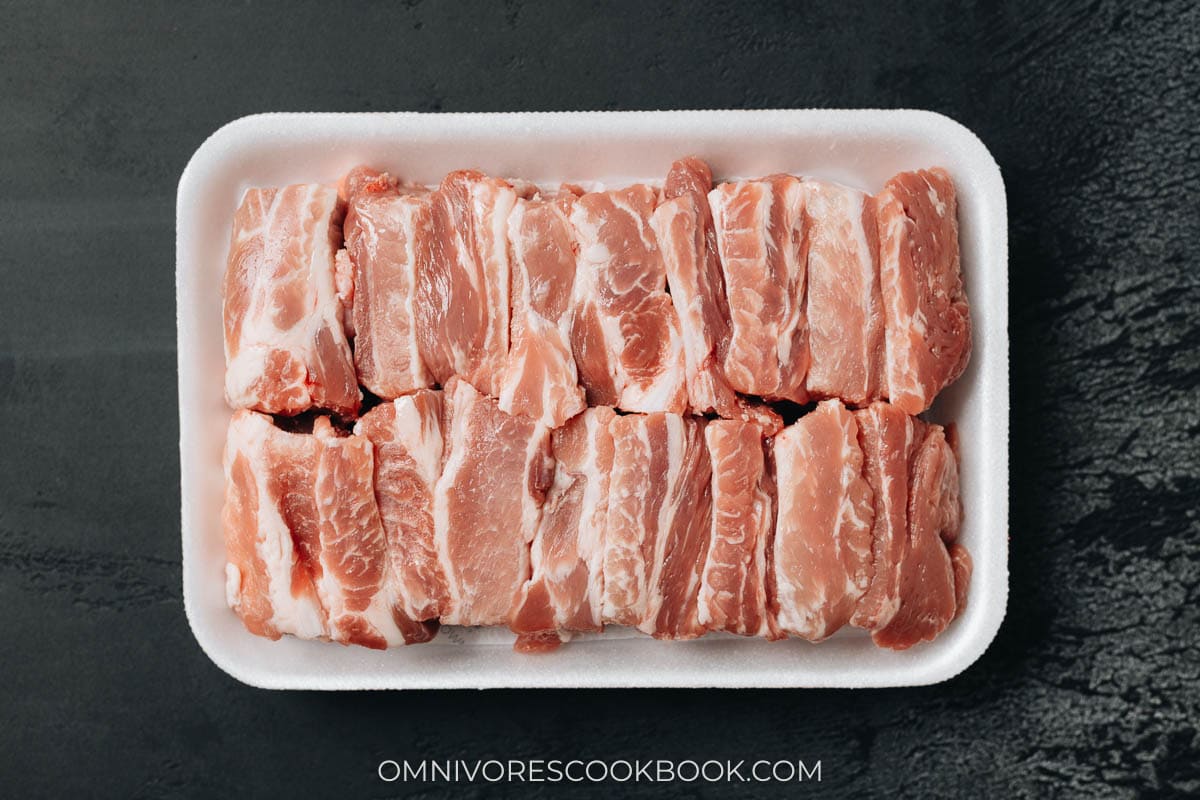
Set up
When you’re ready to cook, your table should have:
- Pork ribs, cut into single riblets
- Sliced aromatics (green onion, ginger)
- Corn, cut to pieces
- Carrot, sliced
- White pepper
- Shaoxing wine
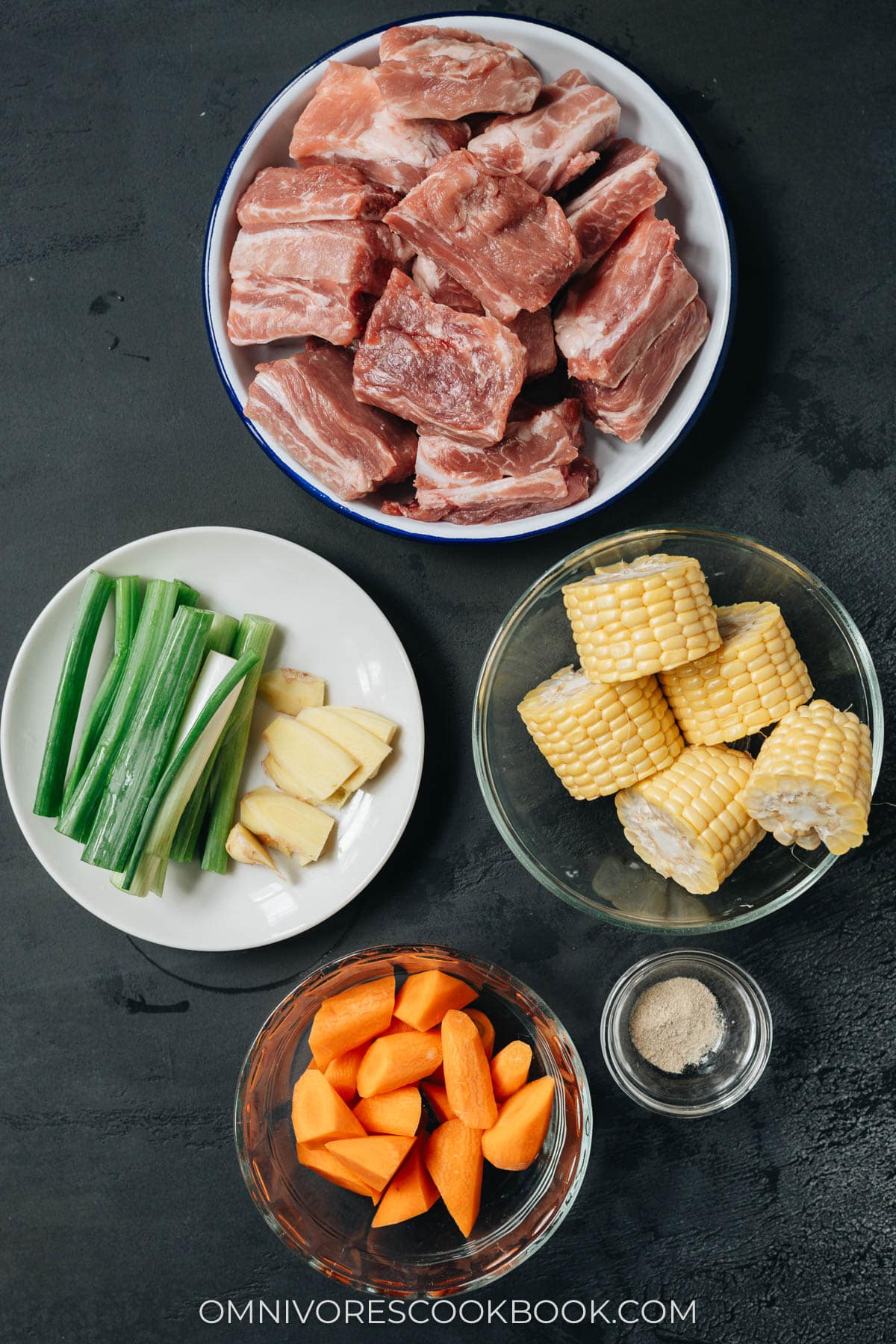
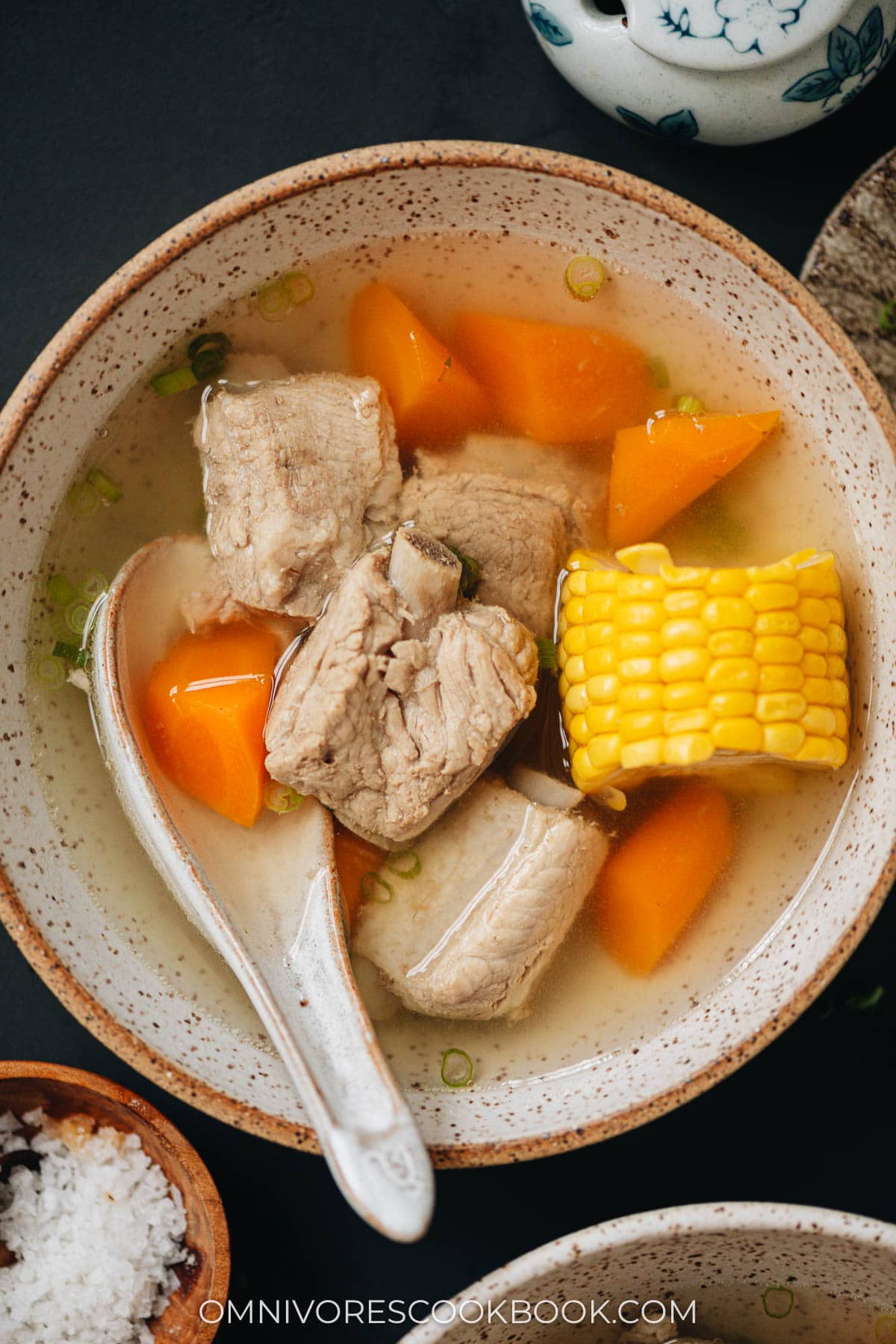
Dipping sauce
I like to make a simple dipping sauce using soy sauce, vinegar, sesame oil and a touch of sugar for the ribs. You can also simply sprinkle some salt over the ribs and enjoy them.
Pork and corn soup variations
Variations of this soup might include additional ingredients like:
- Red dates – I would only add a small handful, or 5 to 6 dates, so the soup won’t taste too sweet.
- Goji berries – 1 to 2 tablespoons is sufficient.
- Wood ear mushrooms – for texture and detoxification
- Dried shiitake mushrooms – I would only use 2 to 3 so it doesn’t impart a very strong taste
How to make pork and corn soup
To start, it’s important to rinse the pork with water, then start the soup by using cold tap water. A lot of Chinese home cooks would soak the pork in cold water for 1 hour or so before cooking, then dump the soaking water.. It further draws blood and impurities from the ribs, so the soup tastes more clear. You can totally skip this step if short on time.
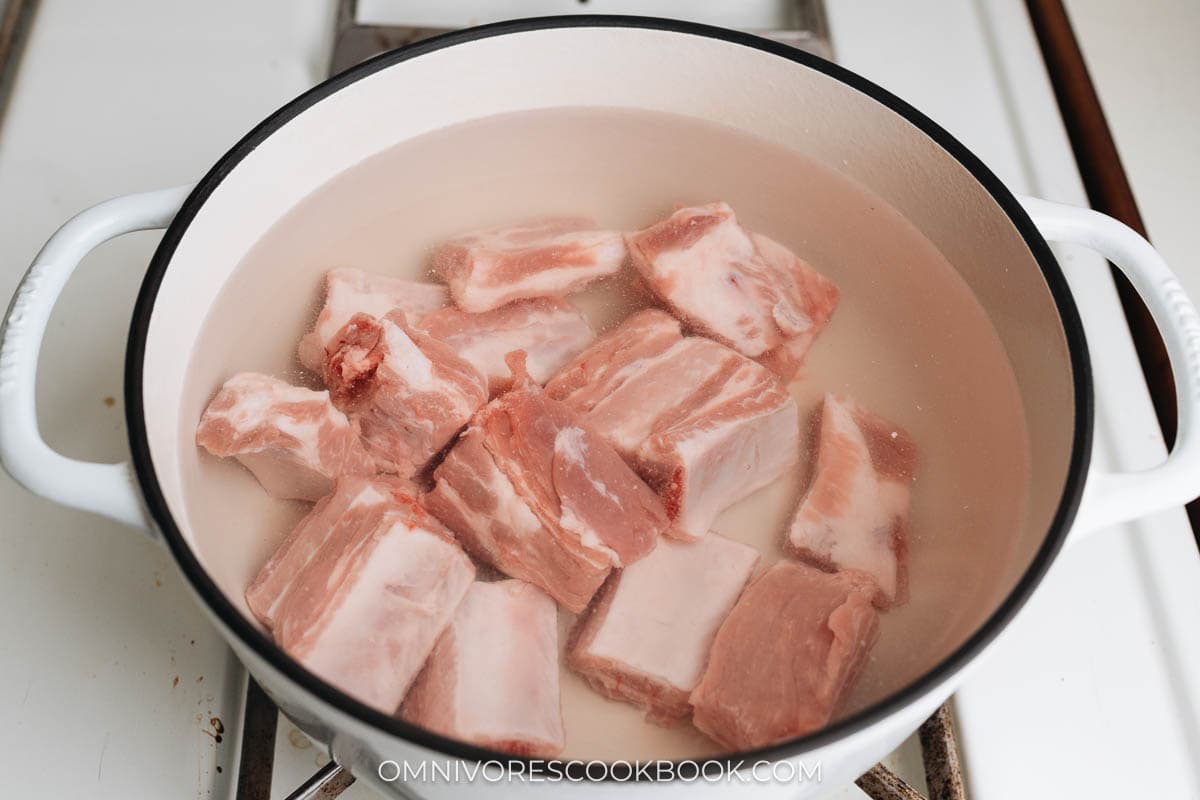
Bring the water to a boil then skim off the brown foam from the top. Some home cooks prefer to further dump this pot of water to further get rid of the impurities. But I found it dilutes the pork soup at the end. So I prefer to only skim off the foam and reserve the broth.

Then you only need to add green onion, ginger and Shaoxing wine. Cover the pot and let the soup simmer. The soup should be on a low boil the whole time.
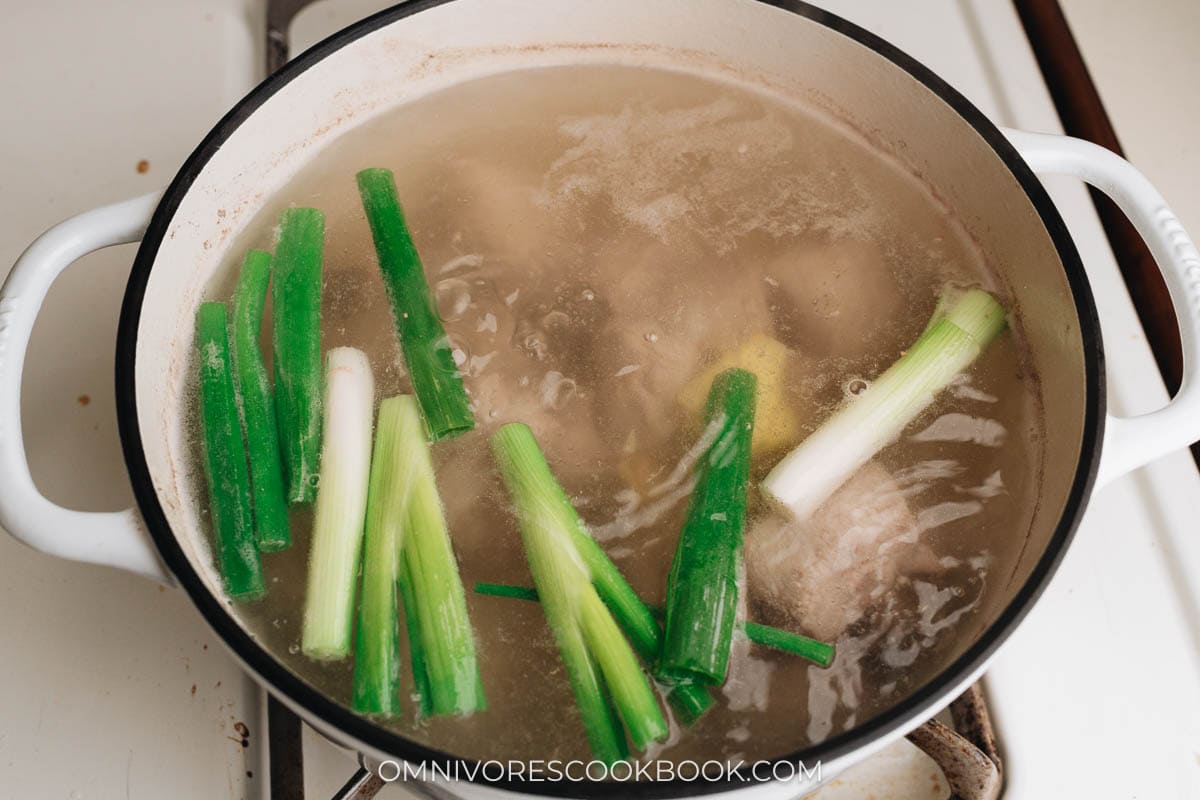
Once the ribs start to get tender, you can add the corn and the carrot and further simmer it for 30 minutes. Once the soup is almost done, I would taste the soup. If the taste is too mild, I would leave the pot uncovered for the final 15 to 20 minutes, so the soup will be more condensed later. Once the soup is done, add salt, white pepper and green onion to adjust flavor. You can add a touch of sesame oil for a further boost.
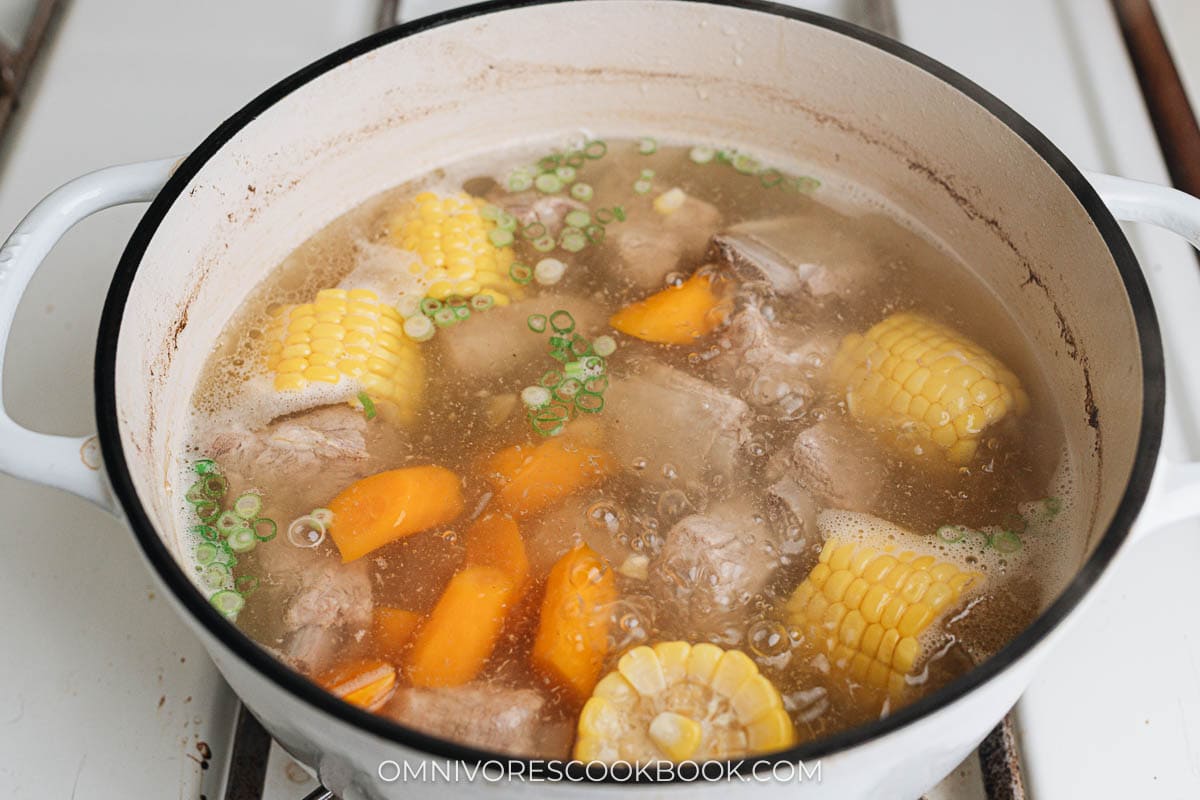
How to serve pork and corn soup
I usually serve pork and corn soup on the side of main dishes for dinner. Sometimes, I also like to enjoy it by itself as a light lunch.
For postpartum recovery, this soup is offered throughout the day to sip on, and the ribs and veggies inside as a snack.
Overall, pork and corn soup is a nourishing and hearty dish that is full of nutrition and tastes great. It will warm you up from the inside out on a cold day!
To make the dish gluten-free, use dry sherry to replace Shaoxing wine. Use tamari instead of light soy sauce, and use rice vinegar instead of Chinkiang vinegar.
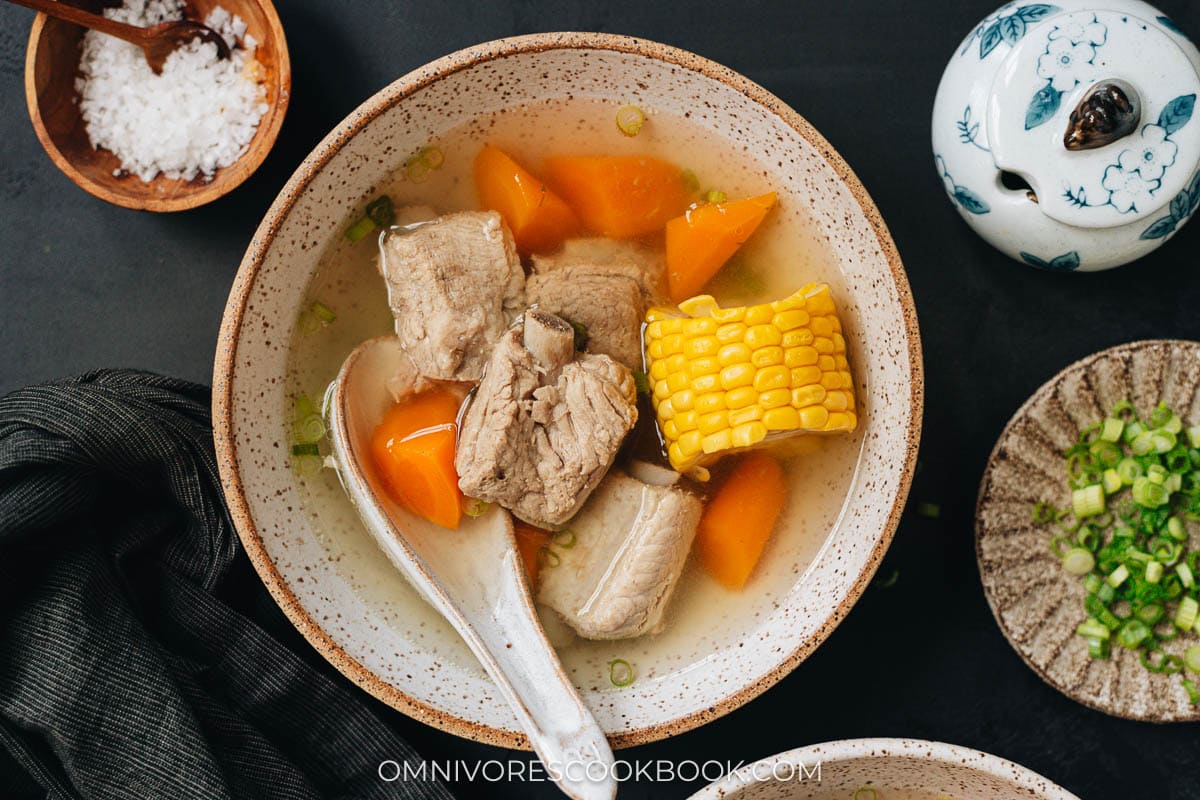
More hearty soup recipes
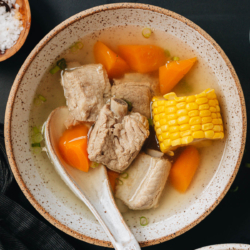
Pork and Corn Soup (Pork and Corn Soup)
Servings: 4 to 6 servings
Ingredients
- 1 lb (450 g) pork ribs cut to single riblets
- 1 tablespoon Shaoxing wine
For the soup
- 2 green onion white part cut to 2” (5 cm pieces) and green part thinly sliced
- 1 thumb ginger sliced
- 1 ear corn on the cob
- 1 large carrot sliced to bite-size pieces
- 1/2 teaspoon salt or to taste
- 1/4 teaspoon white pepper
- Drizzle of sesame oil if preferred (Optional)
For the dipping sauce (optional)
Instructions
-
Rinse the pork ribs with running tap water, then transfer to a large pot. Add 8 cups of cold tap water. Cook over medium-high heat until boiling. Skim off any brown foam from the top and discard it, until the broth is quite clear, 10 to 15 minutes or so.
-
Add the Shaoxing wine, white part of the green onion, and ginger. When the broth is boiling, turn to medium-low heat and cover. Keep at a low boil for 1 to 1.5 hours (*Footnote 1), until the pork starts to turn tender.
-
Then add the corn on the cob and carrot. Taste the soup. Cover and keep at a low boil for 30 minutes or so. Check on the soup after 10 to 15 minutes. If it tastes too thin, leave the pot uncovered and keep cooking, to let some water evaporate and for the soup to taste richer. Add the salt. Skim and discard the oil from the top of the broth, if preferred. (*Footnote 2)
-
Adjust the seasoning with salt and white pepper. Garnish with the green part of the green onion. Serve hot. Dip the pork ribs in the dipping sauce (if making), or simply enjoy them with a pinch of salt.
Notes
- The cooking time depends on the type of ribs you use and the thickness of the ribs. If not in a rush, cook for 1.5 hours for a more flavorful soup and tenderer pork.
- The ribs will release some oil during cooking but it is usually not a large amount. Some people prefer to reserve the oil because it makes the soup more fragrant. If you prefer a clearer soup or are concerned about calorie intake, you can skim and discard the oil.
Nutrition
Serving: 1serving, Calories: 93kcal, Carbohydrates: 12.3g, Protein: 5.1g, Fat: 3.1g, Saturated Fat: 1.1g, Cholesterol: 17mg, Sodium: 343mg, Potassium: 144mg, Fiber: 0.9g, Sugar: 5.3g, Calcium: 12mg

